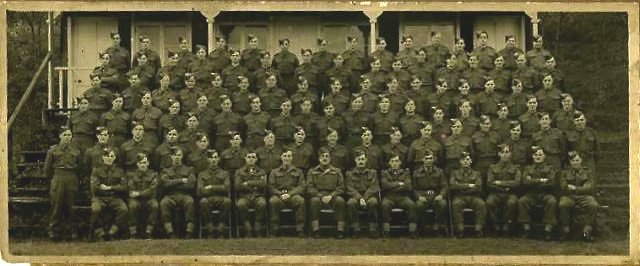
A Collection of 207 Letters between
William Thompson and Edith Hagon
during the WW2 years 1941 to 1945.
View The Letters >>>
View The Letters >>>
© 2024 Alan & Robert Thompson on behalf of William F G Thompson and Edith I Hagon
Battle of Sidi Nsir in Tunisia
In the heart of WW2, the Battle of Sidi Nsir in Tunisia on the 26th February 1943 remains a significant engagement, frequently revisited through the poignant WW2 letters sent by soldiers who fought there. These letters, often stained with the sands of Tunisia, offer a deeply personal glimpse into the chaos and valor of that day. Many of these correspondences recount the harsh realities of the battlefield, where the Axis forces launched a formidable assault against the Allies. In the midst of gunpowder and uncertainty, soldiers found solace in penning their thoughts and experiences, hoping their WW2 letters would bridge the gap between the warfront and home. Through these manuscripts, we learn of the fierce resistance put up by the British and allied troops against overwhelming odds.
Each letter, a historical artifact of WW2, tells a story of courage, fear, and the longing for peace amidst the tumult of war. They speak of the din of artillery, the sharp crack of rifle fire, and the silent prayers whispered in the heat of battle. The vivid descriptions found in these WW2 letters bring to life the strategic significance of Sidi Nsir and the determination of the soldiers defending it. One can almost hear the determination in their words, a testament to their resolve to hold the line at all costs. Sent through censored mail, these WW2 letters were a lifeline, conveying not just the news of the day but also carrying messages of love, hope, and sometimes, heartbreak.
Family members back home cherished these letters, hanging onto every word, decoding the emotion behind each carefully chosen sentence. Through these WW2 letters, historians and descendants have pieced together the narrative of the Battle of Sidi Nsir, recognizing the sacrifice and heroism of those who fought. The letters often included descriptions of the landscape, the camaraderie among soldiers, and the daily challenges faced in the North African campaign. It's through such personal accounts that the battle's tactical movements and its broader implications in the Tunisian campaign of WW2 are understood.
Moreover, these WW2 letters serve as a poignant reminder of the human aspects of war, underscoring that behind every strategy and every statistic, there were individuals with families, dreams, and fears. The Battle of Sidi Nsir, though a single chapter in the extensive annals of WW2, is vividly immortalized through these letters, allowing future generations to remember and learn from the past. Each letter, carefully preserved, stands as a beacon of the resilience and spirit of those who lived through one of history’s most tumultuous times. Thus, the WW2 letters associated with the Battle of Sidi Nsir not only document a crucial military engagement but also cement the personal experiences of soldiers into the collective memory of the Second World War.
During World War II, letters were the primary form of communication between soldiers and their families back home. These letters carried with them the weight of longing, fear, love, and the hope for safe return, providing a crucial emotional lifeline in an era before digital communication. Often subject to censorship, the letters had to be carefully written to avoid revealing sensitive information about military operations or locations. The anticipation of receiving a letter, for both the soldier and the recipient, could be a source of tremendous joy and anxiety, as the delivery of news, whether joyful or tragic, could change lives forever. Even today, preserved WWII letters serve as poignant historical documents, offering intimate insights into the personal experiences and emotional landscapes of those who lived through one of the most tumultuous periods in history.
